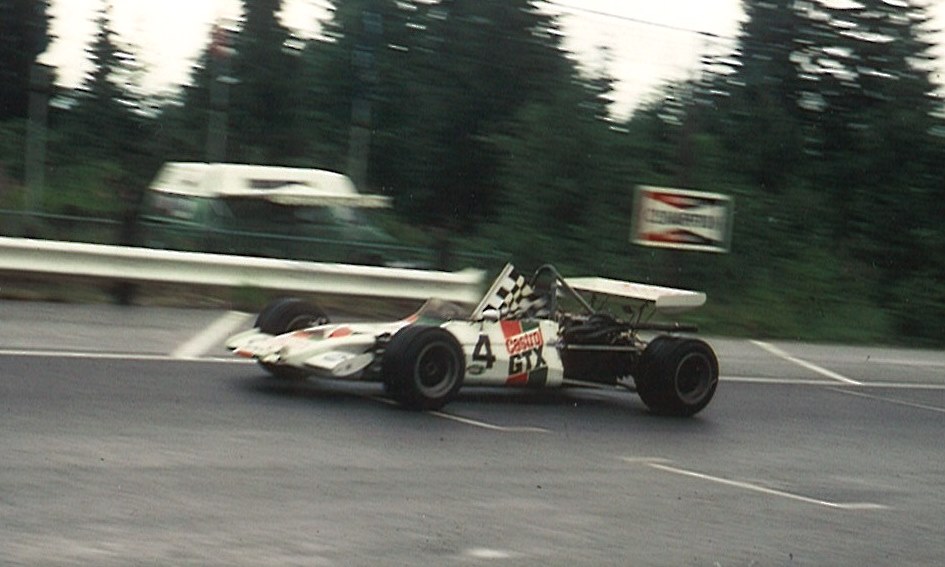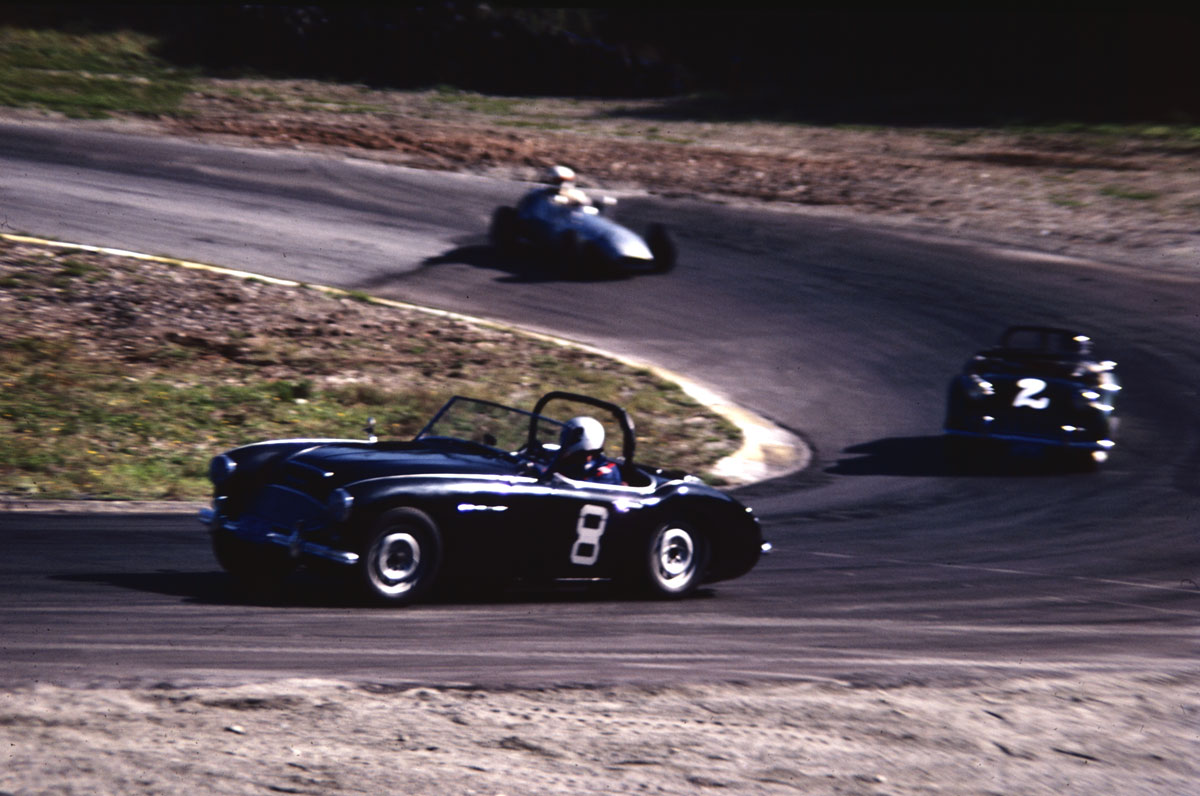-
Semi-Pro Racer

-
-
July 9 th. 1972. Westwood. BC Canada.
The race winner that day was Craig Hill driving a Lotus 69 with a Ford Twin Cam Hart engine.

(Behind the winner's flag is Craig Hill ! )
Ken Hyndman photo.
Here is some engine information.
Notes:
(1) Engine restrictions are one of the main differences between racing classes.
F2: from 1967 through 1971, Formula Two cars were permitted to run 1.3 to 1.6 liter engines. By far the most popular and successful 1.6 liter F2 engine was the Cosworth FVA which featured gear-driven dual overhead cams and four valves per cylinder, atop a four cylinder Ford Cortina engine block. Generally featuring Lucas mechanical fuel injection, these engines typically gave at least 220bhp at 9000 rpm. From 1972, 2.0 liter production-based engines such as the Cosworth BDA (shown above) were allowed.
F3: Formula Three cars were restricted to one liter displacement engines through 1970. Their highly tuned and highly strung little engines screamed as they produced about 125bhp. Starting in 1971, F3 teams were allowed to use larger (1.6 liter) engines if 20mm induction restrictor plates were fitted. The Lotus/Ford Twin Cam seemed like the motor to have. Four throttle bodies would typically draw air from a common plenum. Air entered the plenum through a single inlet. Clever teams realized this inlet should be a "converging/diverging nozzle" and that the geometry of its construction was important. In actual racing conditions, the original 20mm restriction was soon found to be too small. The newly allowed 1600cc engines were only producing about 110bhp! (The cars were about four seconds per lap off their previous pace, which wasn't the intent of the rules.) In mid-August of 1971, the rules were altered and the diameter of the air inlet restriction increased from 20mm to 21.5mm, where it stayed through 1973.
FF: by class rules all Formula Fords used essentially stock versions of the 1600cc Ford engine, with Weber downdraught carburetor, iron crossflow cylinder head, and single camshaft operating valves via pushrods. In this era, a very well prepared Formula Ford engine would produce 105bhp at ~5900rpm.
(2) Chassis number 71-69-5FB shouldn't be confused with chassis number 71-69-5F2, which was Emerson Fittipaldi's Cosworth FVA powered, semi-monocoque chassis Formula Two car for 1971. Incidentally, Lotus built twelve cars with "71-69-xFB" chassis numbers, versus seven cars with "71-69-xF2" chassis numbers. In both cases, "71" in the chassis number designated build year 1971. Lotus is generally believed to have also built seven Type 69 Formula Two cars in 1970; their chassis numbers followed the pattern "69.F2.x".
Here is a site with interesting information on the Craig Hill Lotus 69.
http://www.britishracecar.com/KyleKaulback-Lotus-69.htm
(Ken Hyndman )
Last edited by khyndart in CA; 06-14-2016 at 11:01 PM.
 Posting Permissions
Posting Permissions
- You may not post new threads
- You may not post replies
- You may not post attachments
- You may not edit your posts
-
Forum Rules







 Reply With Quote
Reply With Quote